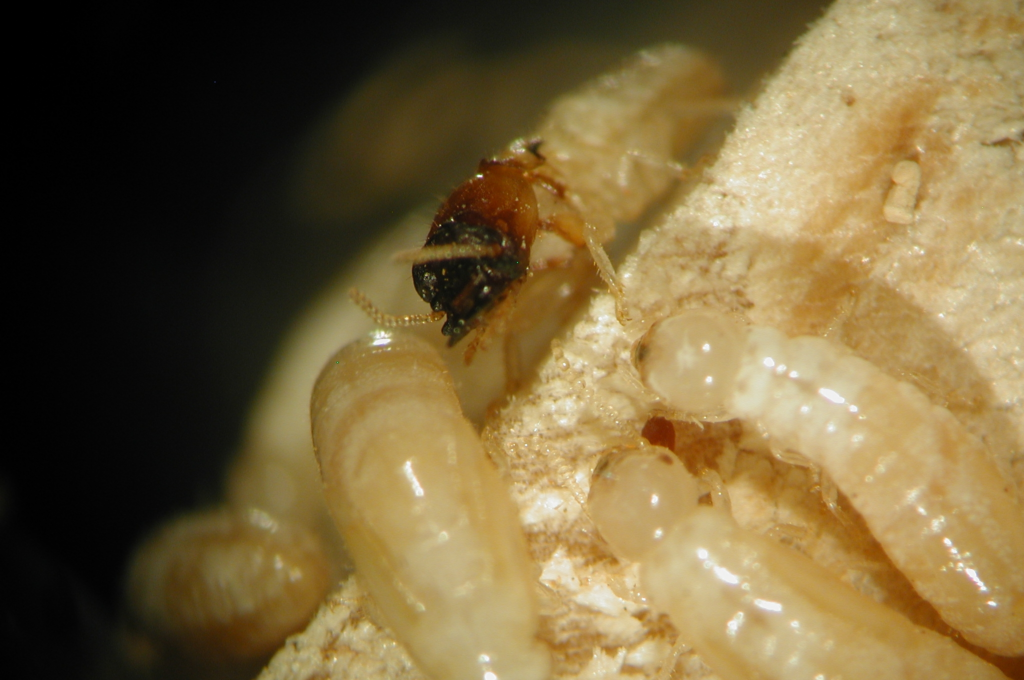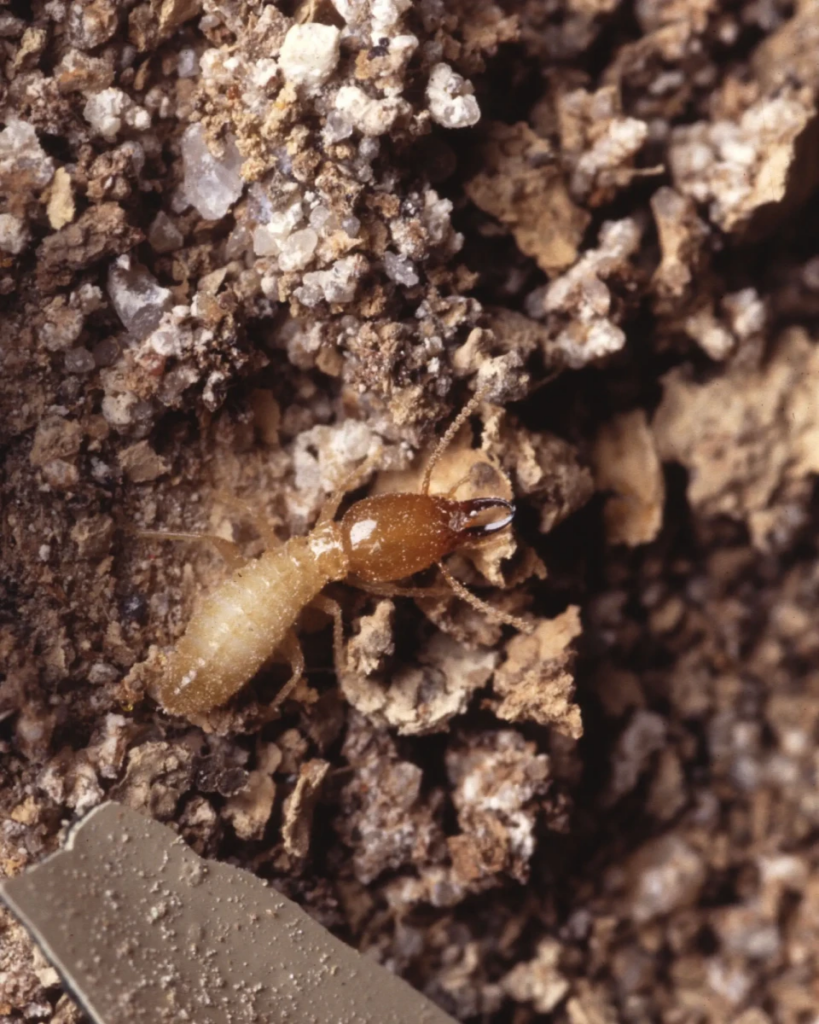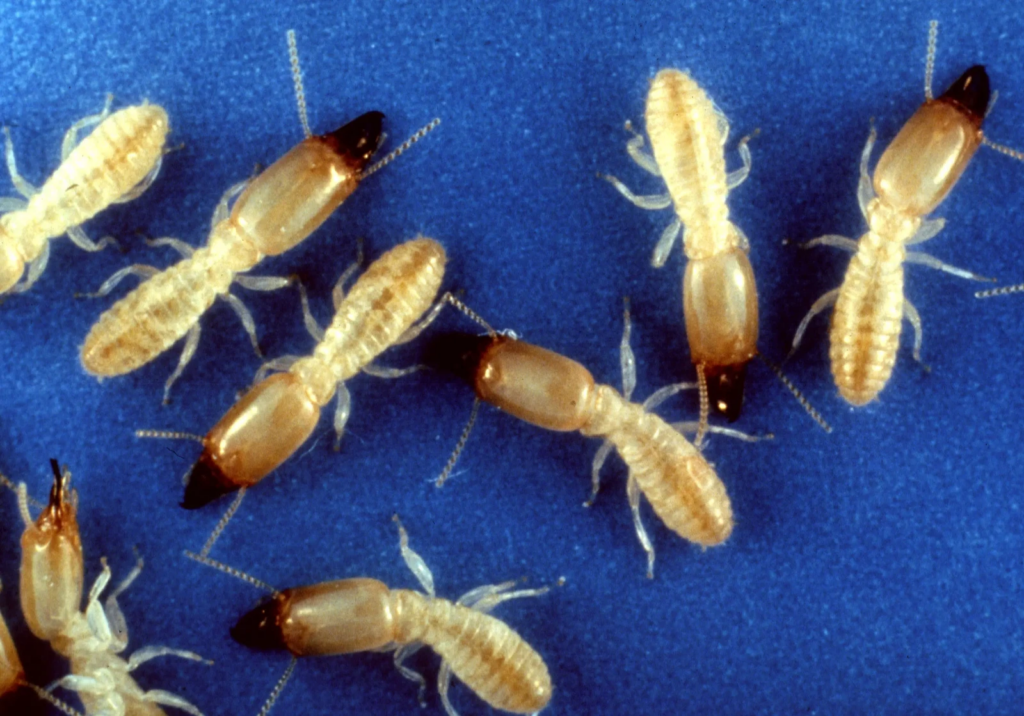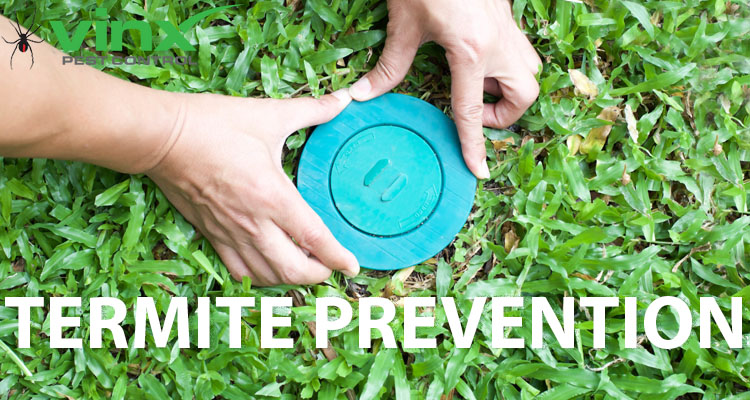Termites are a big problem for homes, causing a lot of damage. The University of Kentucky College of Agriculture says you can lower the risk of termites. Knowing how termites act and what risks they pose is key to stopping damage.
To keep termites away, keep your home clean, dry, and use termite control. Being ahead of the problem can save you a lot of money and hassle.
Key Takeaways
- Understand termite behavior and risk factors to prevent infestation.
- Maintain good housekeeping and eliminate moisture sources.
- Use effective termite control methods to protect your property.
- How to prevent termites is easier then you think. As long as you
Understanding Termites: The Silent Destroyers
It’s important for homeowners to know about termites. These pests can damage homes and buildings a lot. They are a big problem in the United States.
Common Termite Species in the United States
There are many termite species in the U.S. Each one has its own way of acting. Here are a few common ones:
Subterranean Termites
- : These termites live underground. They can damage buildings a lot.

Drywood Termites
- : These termites don’t need soil to live. They can infest dry wood.

Formosan Termites
- : Formosan termites are very aggressive. They have big colonies and can cause a lot of damage.

Signs of Termite Infestation
Knowing the signs of termites is key. It helps catch problems early. Here are some signs to look out for:
Visible Damage Indicators
- : Look for discolored or sagging floors, cracked paint, or hollow wood.
Swarmers and Wings
- : Seeing swarmers or wings near windows or doors means termites are around.
Mud Tubes and Frass
- : Mud tubes on walls or frass near infested areas are signs of termites. For more info, visit https://vinxpestcontrol.com/what-are-the-top-signs-i-have-a-termite-problem/.
The Economic Impact of Termite Damage
Termite damage can cost a lot. Homeowners often have to pay a lot for repairs. Using termite control methods and termite resistant construction can help save money. Also, trying DIY termite prevention can help stop infestations.
Identifying Termite Risk Factors on Your Property
To keep your property safe from termites, knowing what attracts them is key. Termites love places with lots of food and moisture. They often find these in areas where wood meets soil, where it’s too humid, or where air can’t move well.
Wood touching soil is a big problem for termites. This happens when wood, like decking or fences, is close to the ground. To avoid this, keep wood at least 6 inches off the ground. Always check your property for wood touching soil and fix it right away.
Too much moisture is another big risk. Termites need humidity to live, so too much water draws them in. Look for leaks or water damage around your home. Make sure crawl spaces and basements have good air flow. You can use vents or fans to help with this.
Getting regular termite checks is also very important. Think about hiring a pro like Vinx Pest Control to check your place every year. They can spot termites early and suggest ways to stop them.
By knowing and fixing these risks, you can lower the chance of termites. Use tips like keeping wood off the ground and less moisture to protect your home.
Essential Moisture Control Techniques
Termites love moist places, so controlling moisture is key to stopping them.
Moisture near and inside your home draws termites. You can fight this with DIY tricks. Fixing leaks is easy and helps a lot. Leaks from taps, toilets, and pipes attract termites.
Improving drainage is also important. Make sure water doesn’t stay near your home. You can do this by changing the slope around your home and cleaning gutters.
Lowering humidity in crawl spaces and basements is vital. Use vapor barriers to cut down moisture. These are plastic or foil sheets that stop moisture from rising.
Adding vents or fans helps too. They improve air flow and lower humidity. For more tips on keeping termites away, check out Vinx Pest Control.
Some key moisture control techniques include:
- Fixing leaks promptly
- Improving drainage around your property
- Reducing humidity in crawl spaces and basements
- Installing vapor barriers
- Improving ventilation
Using these methods can greatly lower termite risks. It keeps your home safe and helps make it termite-resistant.
Creating Physical Barriers Against Termites
One way to stop termites is by making barriers around your home. You can use materials and methods that keep termites out.
Building with termite-resistant materials is key. This means using termite-resistant woods like redwood or cypress. These woods help stop termites from causing damage.
There are other ways to keep termites out too. For example:
- Putting termite shields around your home’s foundation stops termites from getting in.
- Building a sand barrier around your property makes it hard for termites to get through.
- Getting professional termite treatment services can also help. They can put a chemical barrier around your home.
It’s important to check your home for termites regularly. A termite inspection checklist can help find weak spots. This way, you can act fast if you find termites.
Using these methods together can make a strong barrier against termites. This can greatly lower the chance of termites getting into your home.
How to Prevent Termites Through Landscape Management
Keeping your landscape in check is key to stopping termites. These pests love moisture and wood. So, a well-managed landscape can help keep them away.
Keeping wood away from soil is important. Termites can easily move from soil to wood if they’re close. So, keep decks and fences at least 6 inches from the ground.
Managing mulch and garden beds is also key. Wood mulch can attract termites if it’s too close to your house. Use mulch sparingly and keep it away from wood. Also, make sure garden beds have good airflow and drainage.
Removing dead trees and stumps is vital too. These are perfect for termites. Check trees and stumps for decay or termite signs and remove them quickly.
Other tips include keeping your yard clean and avoiding too much water near wood. Use termite-resistant materials for landscaping. These steps can help prevent termites and protect your property.
By following these tips, you can make your home safer from termites. Regular checks and upkeep of your landscape are essential to keep termites away.
Termite-Resistant Construction and Renovation
Using termite-resistant materials is key to protect homes from termites. Building and renovating with these materials can lower termite risks. Homeowners can use materials and methods that stop termites.
Pressure-treated lumber is a main method for termite protection. It’s treated with chemicals that keep termites away. Composite materials, made from plastics and woods, are also good choices.
Concrete and steel are great for termite protection too. Concrete walls and floors stop termites. Steel framing and structures last long against termites.
Renovations can also use termite-resistant methods. Replace wood with termite-resistant materials. Make sure new builds use these techniques.
Effective methods include stainless steel mesh barriers around homes. Also, use termite-resistant insulation and seal all wood well.
Using termite-resistant materials and methods in building and fixing homes helps a lot. Regular checks and upkeep are also key to keeping homes safe.

DIY Termite Prevention Methods
Homeowners can fight termite infestations with DIY methods. These include using natural repellents, making homemade barriers, and checking for termites often. These steps help keep homes safe from termite damage.
Using natural termite repellents is a good DIY method. Some plants and oils can keep termites away. For example,
- neem oil
- orange oil
- cedar oil
can be used to keep termites out. Homeowners can apply these oils around their homes or where termites might come in.
Creating homemade termite barriers is another DIY trick. You can use
- diatomaceous earth
- cardboard
- sand
to block termites from getting to your home. These materials can help keep termites away.
Checking your home for termites is also key. Look for signs like
- mud tubes
- discarded wings
- frass (termite droppings)
Finding termites early can stop big damage.
There are more ways to stop termites. For example,
- remove debris and woodpiles
- keep your home clean and dry
- fix any leaks or water damage
These steps can lower the chance of termites showing up.
By using these DIY methods, homeowners can keep their homes safe from termites. It’s important to be active and use many ways to prevent termites.
Professional Termite Prevention Services by Vinx Pest Control
Vinx Pest Control offers top-notch termite prevention services. These services protect your property from termite damage. Termite damage can be very costly to fix.
The company has many termite prevention options. They include pre-construction treatments, chemical soil treatments, and bait systems. Pre-construction treatments stop termites before they start. Chemical soil treatments keep termites out by treating the soil. Bait systems use bait stations to attract and kill termites.
A termite inspection checklist helps find termite risks. Vinx Pest Control’s experts do detailed inspections. They find termite signs and suggest the best treatments.
Learn more about Vinx Pest Control’s services on their company page. They focus on reliable termite prevention. Vinx Pest Control is a trusted partner in keeping properties safe from termites.
Professional termite prevention saves you from expensive repairs. Vinx Pest Control’s services cover all termite prevention needs. Whether you own a home or manage properties, Vinx Pest Control can protect your investment.
Conclusion: Creating a Comprehensive Termite Prevention Plan
Creating a plan to stop termites is key to keeping homes safe. Termites damage $336 billion worth of property every year. Knowing how termites act and spotting risks early can help a lot.
Regular checks for termites are a must. Look out for signs like hard-to-open doors or damaged paint. Also, watch for mud tubes and termite poop.
To keep homes safe, a good termite plan is needed. This includes controlling moisture and using barriers. Homeowners can also choose materials that resist termites.
For more tips on finding termites, visit Vinx Pest Control. By following these steps, homes can stay safe from termites.
FAQ
Q: What are the most effective termite prevention strategies?
A: Effective termite prevention includes regular inspections and controlling moisture. You can also use physical barriers and termite-resistant materials. Plus, managing your landscape is key.
Q: How can I identify termite risk factors on my property?
A: To spot termite risks, look for signs of infestation and moisture. Check if wood touches the soil. Regular inspections are also important.
Q: What are some DIY termite prevention methods?
A: DIY methods include using natural repellents like orange and neem oil. Reduce moisture and create barriers with sand or diatomaceous earth.
Q: How can I prevent termites through landscape management?
A: To manage termites in your landscape, keep trees and shrubs away from your home. Remove debris and clutter. Don’t store wood near your property. Regularly check for termite signs.
Q: What is termite-resistant construction, and how can it help prevent termite infestations?
A: Termite-resistant construction uses materials and designs that prevent termites. It includes using resistant woods and designing with prevention in mind. Physical barriers are also used.
Q: How often should I inspect my property for termites?
A: Inspect your property for termites at least once a year. If you live in a high-risk area, do it more often. Early detection reduces damage.
Q: Can professional termite prevention services help prevent termite infestations?
A: Yes, services like those from Vinx Pest Control can help. They offer regular inspections and identify risks. They also use effective prevention methods.
Q: What are some effective termite control measures?
A: Effective control includes using baits and traps, and applying liquid termiticides. A good plan includes regular inspections and maintenance.



